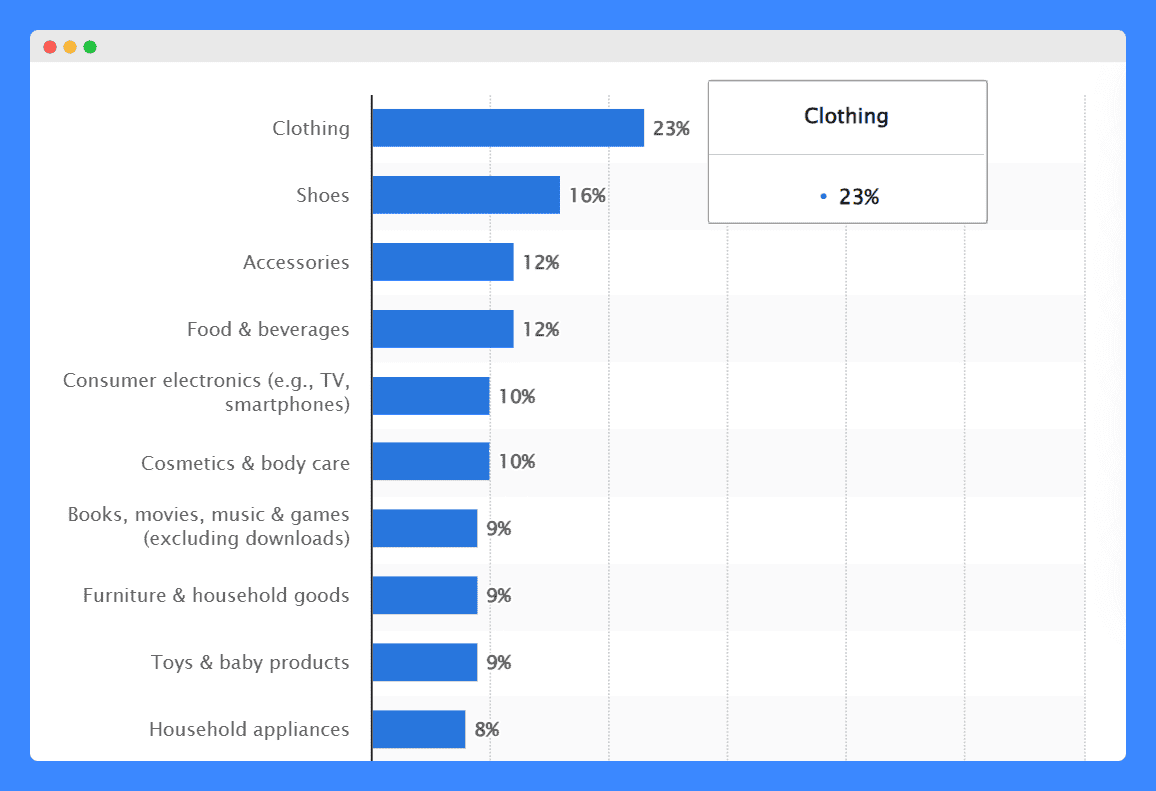Anyone venturing into eCommerce knows that handling returns is an inevitable aspect of running a business. A well-structured return merchandise authorization RMA policy can streamline this process, improving customer satisfaction and minimizing costs.
But what is return merchandise authorization?
An RMA is a system through which customers must go to obtain approval before returning a purchased item. This step helps businesses manage returns efficiently, ensuring every returned item is accounted for and properly inspected upon receipt.
With a clear RMA return policy, you’re not only providing a better customer experience but also protecting your business from unnecessary losses. Below, we’ll talk about how to create and manage an effective RMA system.
- An RMA policy helps your business stay organized by clearly outlining return procedures. It sets clear expectations for both you and your customers.
- Automating your RMA process reduces errors and saves time. It improves how you track and manage returns for a better customer experience.
- Display your RMA policy in accessible places on your website. This makes it easier for your customers to understand the return process.
Table of Contents
PRO TIP: Take the hassle of writing your own return policy away with our return and refund policy generator trusted by over 200,000 businesses. It’ll save you hours of work and help increase sales in minutes.
Why Do You Need a Return Merchandise Authorization RMA Policy for Your Business?
You need a return merchandise authorization (RMA) policy for your business to ensure that every return is managed consistently and efficiently. Without an RMA policy, the return process can become chaotic and costly.
Here are just some of its benefits:
- Eligibility Verification: With an RMA, you can verify that each returned item is actually eligible for a return, which helps prevent fraudulent or ineligible returns.
- Cost Management: By controlling how and when customers can return items, you can better manage the costs associated with returns. In turn, this reduces potential losses from handling returned goods.
- Efficient Processing: An RMA policy allows your team to effectively process the return, including necessary inspections and documentation. This speeds up the time to resolve customer issues.
- Tracking and Transparency: Having an RMA means both you and your customers can track the status of their returns throughout the process. This level of transparency shows they can trust your business.
In my experience, having a well-crafted RMA policy helped streamline my business operations. When customers know what the return process will look like, they won’t feel lost if they want to initiate a return.
This not only enhances customer satisfaction but also reduces the workload on our support team because fewer customers need assistance with the return process.
This is especially important for businesses in high-return categories like fashion. Recent data suggests that 23% of U.S. respondents in a 2024 survey named “Clothing” as the most frequently returned online purchase.

Having an RMA policy in place helps manage these returns efficiently and minimizes the chaos that can come with handling large volumes.
PRO TIP: Use the RMA information you gather to analyze return trends, identify product issues, and enhance quality control measures.
How Does the Return Merchandise Authorization Process Work?
The Return Merchandise Authorization process, also known as return material authorization (RMA), provides a structured method for handling returns.
When a customer wants to return a product, the RMA plays a crucial role in managing this process efficiently. To give you an idea, here’s how it usually goes:
Step 1: Customer Initiates a Return
When a customer wants to return a product, they must first submit an RMA to the seller. To do this, customers must request an RMA form, where they specify the reason for the return and any other details required by the company.
Step 2: Obtain an RMA Number
Once the return request is reviewed and approved, the customer is given a return merchandise authorization number, referred to as a return merchandise authorization RMA. This unique RMA number is used to track the return throughout the process.
Step 3: Shipping the Product Back
With the RMA number in hand, the customer then sends the product back to the business. The return package should clearly display the RMA number to expedite processing and verification when it arrives back at the warehouse or processing center.
Step 4: Processing the Return
Upon receiving the returned item, the business will use the unique RMA number to verify the return and assess the product’s condition.
This step confirms that the item matches the return request and checks for any damage or misuse that might affect the refund or exchange.
Step 5: Refund or Exchange
After the return is processed and approved, the business will then issue a refund or exchange as per the terms of the return policy. The RMA ensures that this process is handled smoothly and according to the guidelines established by the RMA policy.
Implementing an RMA system speeds up returns and keeps both parties informed, making the whole process smoother and more reliable.
10 Key Components of an Effective RMA Policy
For a smooth and efficient return process that satisfies both your business and your customers, include these key components in your RMA policy:
1. Clear Eligibility Criteria
This part of an RMA policy is where you set the ground rules for what can be returned and under what circumstances. Basically, it’s where you outline the specific return criteria that a product must meet to be eligible for return.
For example, this part of OleumTech’s RMA policy helps customers identify the return type—like whether the product is defective, doesn’t match the description, or if they simply changed their mind. Each category might have different rules.

Also, knowing the reason for the return or exchange upfront helps ensure that both you and your customer are on the same page right from the start. In short, it’s all about making sure there are no surprises.
2. Detailed Return Process Instructions
Here is where you lay out a clear, step-by-step guide that customers can follow when they need to return a product. This helps make the process straightforward, which in turn can minimize customer service calls and emails.
For example, in my business, the return process starts when the customer initiates the return. Here’s how it typically goes:
First, the customer visits our website and fills out a return merchandise authorization form to log their return request. Once the form is submitted and approved, we provide further instructions on how to send the product back to us.
By providing these detailed instructions right from the beginning, we ensure that both parties know what to expect, helping the return go as smoothly as possible.
3. Defined RMA Validity Period
In this section, you set a specific timeframe within which a return must be initiated and processed. For example, 52 Networks established a return window of 20 days from the date of purchase.

This set timeframe encourages customers to review their purchases promptly and decide if they need to return them.
It’s also worth noting that for specific types of sales, there are laws like the Federal Trade Commission’s Cooling-Off Rule, which allows customers three days to cancel purchases of $25 or more.
4. Specific Conditions for Refund or Exchange
This part of an RMA policy outlines what makes a product eligible for either a refund or an exchange and under what specific scenarios these actions are warranted.
You may say that a return or exchange of products is only possible if the items are in their original, unopened packaging or if there is a verifiable defect that was not caused by the customer.
That said, your policy should comply with the Uniform Commercial Code guidelines. This set of laws states that customers are entitled to a refund or replacement if the product sold is defective or does not meet the agreed-upon terms.
5. Guidelines for Return Shipping
This component of an RMA policy specifies who pays for return shipping, how to obtain a return shipping label, and the proper way to package and return the item.
Let’s say you run an online electronics store. Your return shipping guidelines could state that your business covers the cost of return shipping if the product is defective or not as described.
You then provide customers with a prepaid return shipping label via email once the return request is approved. However, if customers are returning an item due to buyer’s remorse, they might be responsible for the shipping costs.
6. Restocking Fees (if applicable)
This refers to the charges that your business might impose when a product is returned. It is typically a percentage of the product’s price and is meant to cover the costs associated with processing a return and getting the product ready for resale.
Pedestal PRO makes this clear in its RMA policy:

Clearly stating this in their RMA policy discourages frivolous returns while still allowing flexibility for legitimate cases.
Restocking fees balance customer satisfaction with the financial realities of high return rates. It helps your business remain profitable while offering a fair return process.
7. Documentation Requirements
These documents refer to the necessary paperwork and information that must accompany a return to be processed efficiently. This way, each return is properly tracked and validated.
For example, when a customer returns an item to my store, one crucial piece of documentation they must include is the product return authorization number.
This number is assigned during the initial return request and serves as a unique identifier for the return. Using this number, my team can quickly verify the transaction, assess the return’s validity, and expedite the refund or exchange process if necessary.
8. Customer Communication Protocols
Your RMA policy should also list the specific methods and standards your business uses to interact with customers throughout the return process.
For example, here’s how Venissac makes sure its customers know where to call to obtain a return goods authorization number:

Venissac also provides its customers with a dedicated support line and an FAQ section on its website. This way, they have multiple channels for any additional questions or concerns they might have during the return process.
9. Return Status Updates
Subsequent updates, such as when the return is received at your warehouse and when the refund or exchange is processed, should also be communicated promptly to the customer.
This level of communication ensures that customers are not left wondering about the status of their return.
Additionally, if you ever need to reject the return due to non-compliance with your return policy, informing the customer promptly and clearly explaining the reasons can help maintain a good customer relationship despite the rejection.
PRO TIP: Turn a negative experience of returning a product into a positive by providing clear, consistent communication at every step. It will also make your customers feel valued and well-informed.
10. Dispute Resolution Procedures
These refer to the procedures your business employs to handle disagreements or issues that arise during the return process.
For instance, if a dispute occurs because a customer disagrees with the assessment of a returned item or the reasons for rejecting a refund, having a clear procedure in place helps both parties understand the next steps.
Your policy should include who to contact, how to submit a complaint, and how the issue will be reviewed. By explicitly addressing return reasons in your dispute resolution process, your customers know that each complaint is handled fairly.
How you resolve conflicts determines the strength of your customer relationships. Showcase fairness and transparency by having a clear dispute resolution process.
Where To Display the Return Merchandise Authorization Policy on Your Website
Display your RMA policy where your customers can easily access and understand your return process. Some of the best spots to consider are:
- FAQ Section: This is where most customers looking to request a return go. You can also detail your return policies and procedures here.
- Website Footer: A common location for legal links, linking the RMA policy here ensures it is accessible from any page on your site.
- Checkout Page: Adding a link to your RMA policy here helps inform customers of the return process before they complete a purchase.
- Returns and Exchanges Page: A dedicated page for returns can provide detailed explanations of how to initiate a return, what to expect, and other related information.
How Do You Implement an Efficient RMA Process?
Implementing an efficient and customer-friendly returns process requires careful planning and adherence to RMA best practices. Here are some key strategies to guarantee your RMA management system benefits your business:
1. Integrate Automation
Use software to automate steps in the return management process, such as generating RMA numbers and tracking returns. Automation helps maintain a streamlined RMA process in place.
2. Train Your Staff
All team members must be involved in RMA management. Train them to handle returns more efficiently and provide better customer service.
3. Set Realistic Timeframes
Define clear and realistic timeframes for each step of the return process, from issuing RMA numbers to processing refunds or exchanges. This helps set proper expectations with customers.
4. Monitor and Adapt
Regularly review the effectiveness of your RMA process. Be open to feedback and make adjustments to improve efficiency and customer satisfaction.
Frequently Asked Questions
What are the common reasons customers request RMAs?
Customers often request RMAs to return products due to defects or dissatisfaction. They also seek returns if the item received doesn’t match what was advertised.
What are the benefits of automating the RMA process for my business?
Automating the RMA process enhances efficiency and consistency, improving the overall return experience. It reduces errors and speeds up resolutions.
How should I communicate my RMA policy to customers?
Clearly display your RMA policy on your website and include it in customer communications. It should be easy to understand and accessible.
Can I use an RMA system to reduce return fraud in my business?
Yes, an RMA system can reduce return fraud by requiring a detailed reason for return. It verifies eligibility before processing returns.
How do I track and manage RMAs effectively?
To track returns effectively, use RMA management software that assigns unique tracking numbers to each request. This helps you monitor the entire return process from start to finish.
What are the common reasons customers request RMAs?
Customers often request RMAs to return products due to defects or dissatisfaction. They also seek returns if the item received doesn’t match what was advertised.



